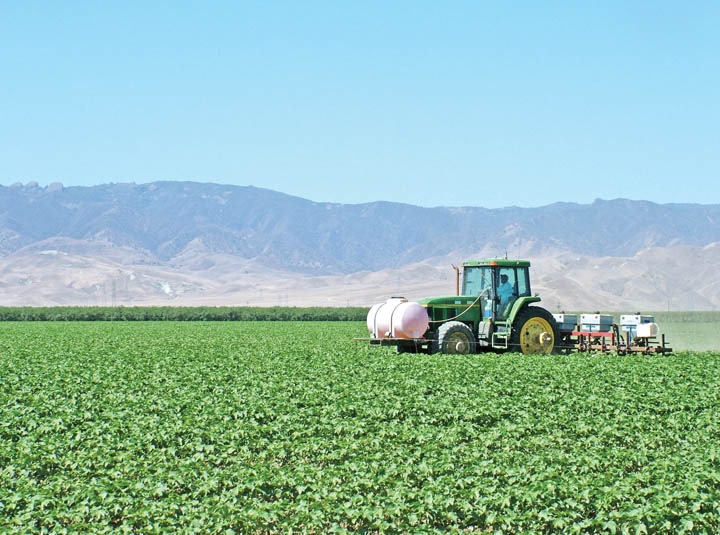June 15, 2012

Now is the time to be on the high alert for lygus bug damage in San Joaquin Valley cotton, according to University of California IPM entomologist Pete Goodell.
Lygus poses a significant threat to young, early squares.
That may be the bad news. The good news is that conditions are not all that conducive for lygus damage this year, and the SJV crop so far is much better at this stage of the season than the past two years, according to most industry observers.
 For one thing, the valley’s cotton was planted on time and has been growing under virtually ideal conditions. Goodell told growers and PCAs at a San Joaquin Sustainable Farming Project cotton field day near Firebaugh, Calif., that crop uniformity allows for better overall pest management.
For one thing, the valley’s cotton was planted on time and has been growing under virtually ideal conditions. Goodell told growers and PCAs at a San Joaquin Sustainable Farming Project cotton field day near Firebaugh, Calif., that crop uniformity allows for better overall pest management.
Second, the foothills ringing the valley are not a source for lygus migrating into cotton this season, as they have been in the past, because winter and early spring rainfall patterns have not produced vegetative habitat for lygus in the hills or in the valley.
“If you find lygus, they’ll come from spitting distances,” he said, meaning they would be migrating from sources like nearby alfalfa and safflower. Goodell’s “spitting distance” is two to three miles.
However, he does not expect any major influx of lygus because overall cotton pest pressure has been low through mid-June.
Therefore, cotton is setting a good bottom crop, according to Goodell, “and that is what you want to protect so monitor your fields closely to hold that early set.”
June is the most critical time to monitor lygus; July not so critical, and August is a non-issue for lygus control.
One of the biggest sources of lygus is safflower. When it starts to dry down ahead of harvest, large populations of lygus bugs will migrate out and the preferred host is cotton.
Goodell says the largest safflower acreage in the Tulare Lake Basin in Kings County was treated for lygus around Memorial Day.
“Safflower can be managed for lygus control in cotton. If you have safflower next to your cotton, it is not the end of the world,” he said. However, oftentimes the safflower is not farmed by the same person who is producing the cotton. Goodell said this makes it important to be a “good neighbor.”
It is not uncommon for a cotton grower to pay to treat safflower, if lygus pressure for nearby cotton is imminent.
The good neighbor policy also applies to alfalfa, another major source of lygus. Goodell has long been an apostle of community-wide pest management programs, with growers looking out for each other.
One way Goodell has advocated doing that is for alfalfa producers to leave strips of unharvested alfalfa to act as a trap to keep lygus in the alfalfa and out of the cotton. Some growers have treated those strips to control lygus.
Goodell is heartened by the good neighbor practices he is seeing.
If infestation levels reach the treatable stage, Goodell says to use selective materials early to preserve beneficials and to practice insecticide resistance management if you have to treat more than once.
Phenoxy herbicide drift
The biggest concern right now, according to Goodell, is the possible loss of squares from the phenoxy herbicide drift that is being seen in the valley.
(For more, see: SJV phenoxy drift cotton damage widespread)
Drift from a pasture application of 2,4-D in Merced County in early June has damaged cotton as far south as Kern County. Officials are still assessing the damage levels. So far, Dan Munk, Fresno County UC cotton farm advisor, said he has not seen any square losses due to the drift. However, UC Merced farm advisor emeritus Bill Weir, has estimated a 15 percent to 20 percent yield loss in fields close to the application.
This, says Goodell, could affect square retention evaluations when assessing a lygus threat.
About the Author(s)
You May Also Like






